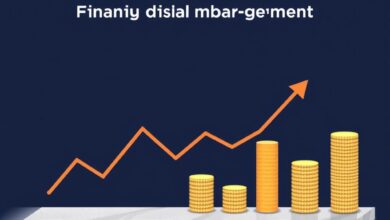Can you live off your investments? Here’s how

Establish a robust finance plan that prioritizes diversified assets to achieve retirement goals. Allocate funds across various sectors, including equities, fixed income, and real estate. This strategy ensures a balanced risk profile while maximizing potential returns.
Consider adopting a systematic investment approach, such as dollar-cost averaging. This method allows you to invest fixed amounts regularly, reducing the impact of market volatility on your total investment. Over time, this technique can enhance your portfolio’s growth trajectory.
Incorporate tax-efficient accounts like IRAs or 401(k)s into your overall scheme. These vehicles provide significant tax advantages that can accelerate the compounding of your wealth. Monitor the performance of these assets consistently to adjust your strategy based on market conditions and personal financial objectives.
Lastly, educating yourself about asset allocation is paramount. Understanding how different investments interact within your portfolio will empower you to make informed decisions that align with your long-term vision for retirement stability.
Choosing Investment Vehicles
Select diversified assets that align with your finance plan to secure a stable income during retirement. Consider equities for growth potential, but balance them with fixed-income options like bonds for stability. Real estate can provide tangible benefits, including rental income and appreciation.
Exchange-traded funds (ETFs) present a cost-effective way to gain exposure to various sectors without the need for extensive research on individual stocks. They allow you to spread risk while capturing market trends.
Utilize tax-advantaged accounts such as IRAs or 401(k)s to maximize your returns. These vehicles not only defer taxes but also often include employer matching contributions, effectively boosting your capital without additional effort.
For those seeking liquidity, consider cash-equivalents like money market funds. While they offer lower returns, their safety and ease of access can be beneficial in times of market volatility.
Evaluate your risk tolerance regularly and adjust your portfolio accordingly. A well-rounded mix of high-risk and low-risk assets will help maintain a steady trajectory toward achieving your long-term financial goals.
Building a Diversified Portfolio
Allocate at least 60% of your assets to equities, as they historically outperform other asset classes over the long term. Consider including a mix of domestic and international stocks to mitigate geographic risk.
Invest 20% in fixed-income securities. Bonds can provide stability and income, particularly during market downturns. Select a combination of government and corporate bonds based on your risk tolerance.
Dedicate 10% to alternative investments such as real estate or commodities. Real estate can offer both appreciation and rental income, while commodities like gold serve as a hedge against inflation.
The remaining 10% should be held in cash or cash equivalents for liquidity. This allows flexibility to seize investment opportunities or cover unexpected expenses without selling assets at a loss.
Rebalance your portfolio annually to maintain your desired asset allocation. This prevents any single investment from dominating your finance plan due to market fluctuations.
Utilize low-cost index funds or ETFs for broad market exposure, reducing fees that can erode returns over time. Choose tax-efficient accounts for investments that generate significant taxable events.
Regularly review and adjust your strategy based on life changes, market conditions, and personal financial goals. Ensure alignment with your retirement objectives while managing risk effectively.
Managing Withdrawal Rates
A sustainable withdrawal rate is key to maintaining retirement assets over the long term. Aim for a withdrawal rate between 3% and 4% of your portfolio annually. This approach balances the need for income with the preservation of capital.
Regularly assess your financial situation and adjust your withdrawal strategy based on market conditions, age, and personal expenses. For instance, during market downturns, consider reducing withdrawals to prevent depleting assets too quickly.
Utilize a bucket strategy: allocate assets into different “buckets” based on time horizons. Short-term needs can be met with safer investments like cash or bonds, while long-term goals can leverage equities for growth potential.
Monitor inflation rates closely; adjust withdrawals accordingly to ensure that purchasing power remains intact throughout retirement. A fixed dollar amount may not suffice over time due to rising costs.
Consider utilizing an annuity as part of your income strategy. It provides guaranteed payments for a specified period or lifetime, adding stability to your financial plan.
Lastly, keep an emergency fund separate from investment assets. This ensures liquidity without needing to sell investments in unfavorable market conditions, thereby protecting overall returns.
Tax Considerations for Investors
Understanding tax implications is crucial when formulating a finance plan. Different types of assets can yield varying tax obligations, which can significantly affect your retirement strategy.
- Capital Gains Tax: Long-term capital gains are generally taxed at lower rates compared to short-term gains. Holding investments for over a year can lead to substantial tax savings.
- Dividend Tax: Qualified dividends are often taxed at the long-term capital gains rate, while ordinary dividends are subject to your regular income tax rate. Prioritize assets that yield qualified dividends to enhance net returns.
- Tax-Advantaged Accounts: Utilize accounts like IRAs and 401(k)s, which allow tax deferral on growth until withdrawal. This should be a key element in your asset allocation strategy.
- Tax-Loss Harvesting: Offset capital gains with losses from other investments. This technique can help minimize your taxable income and is especially useful towards the end of the fiscal year.
- State Taxes: Be aware of how state-specific taxes impact your overall returns. Some states have no capital gains tax, which could influence where you choose to reside during retirement.
A thorough understanding of these factors will enable more effective management of withdrawal rates and ultimately contribute to achieving financial goals efficiently.
- Evaluate current investments with an eye on their tax treatment.
- Consult with a tax professional annually to optimize your strategy and adapt as regulations change.
- Create a diversified portfolio that considers both return potential and tax efficiency.
Taking these actions will enhance your ability to retain more of your investment earnings throughout retirement, aligning closely with your overarching finance plan.





